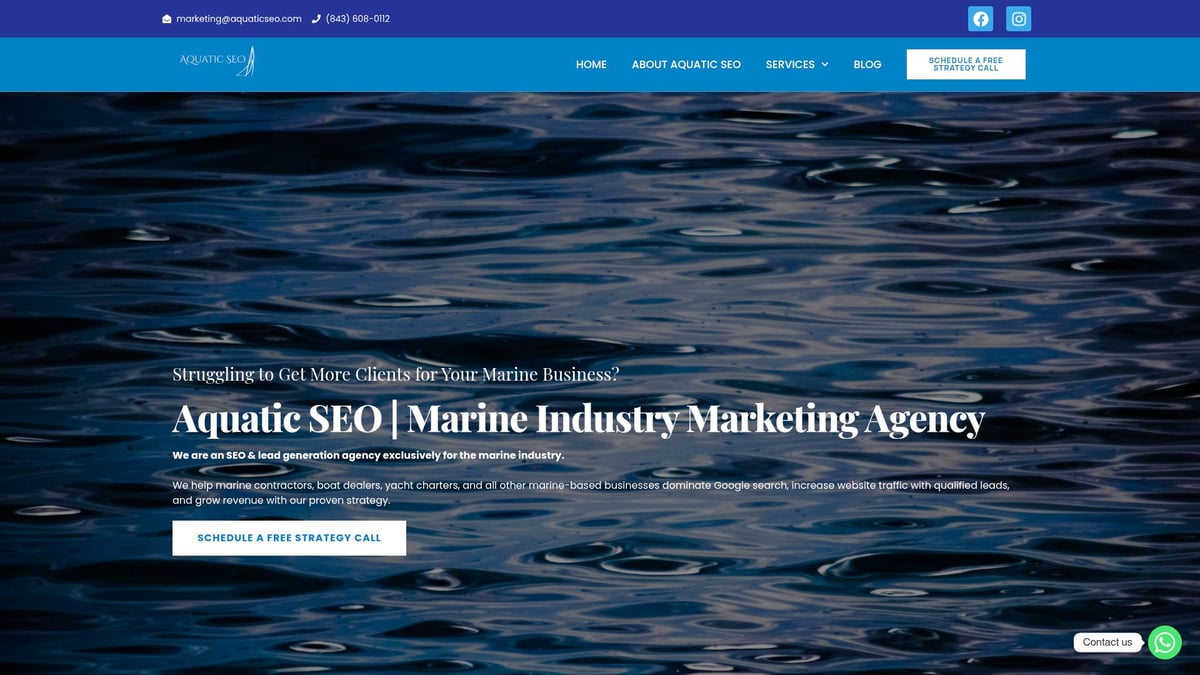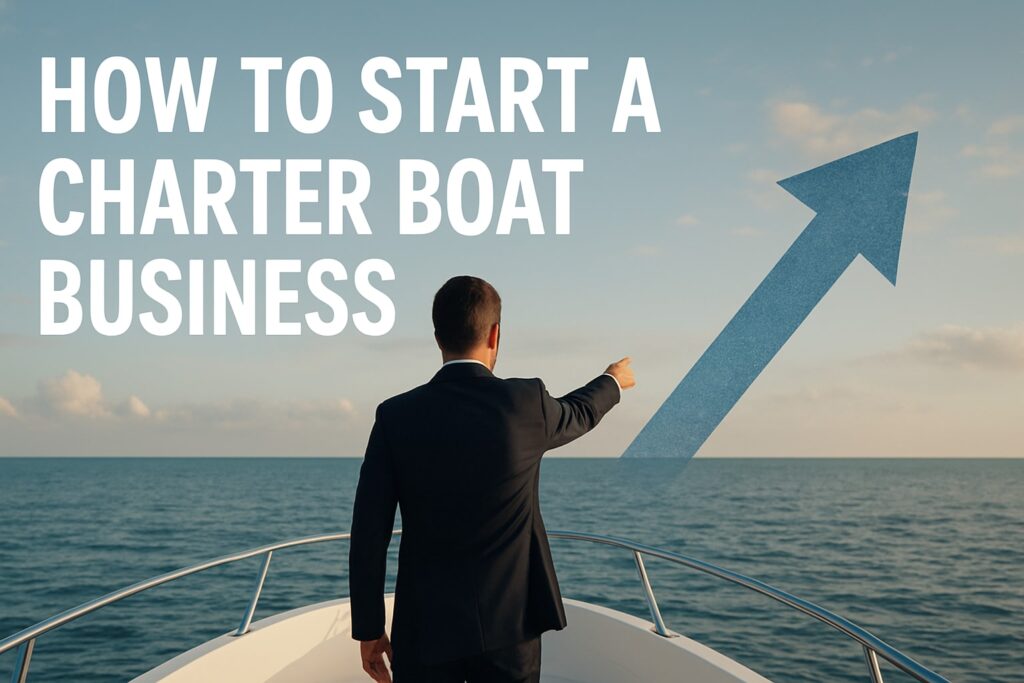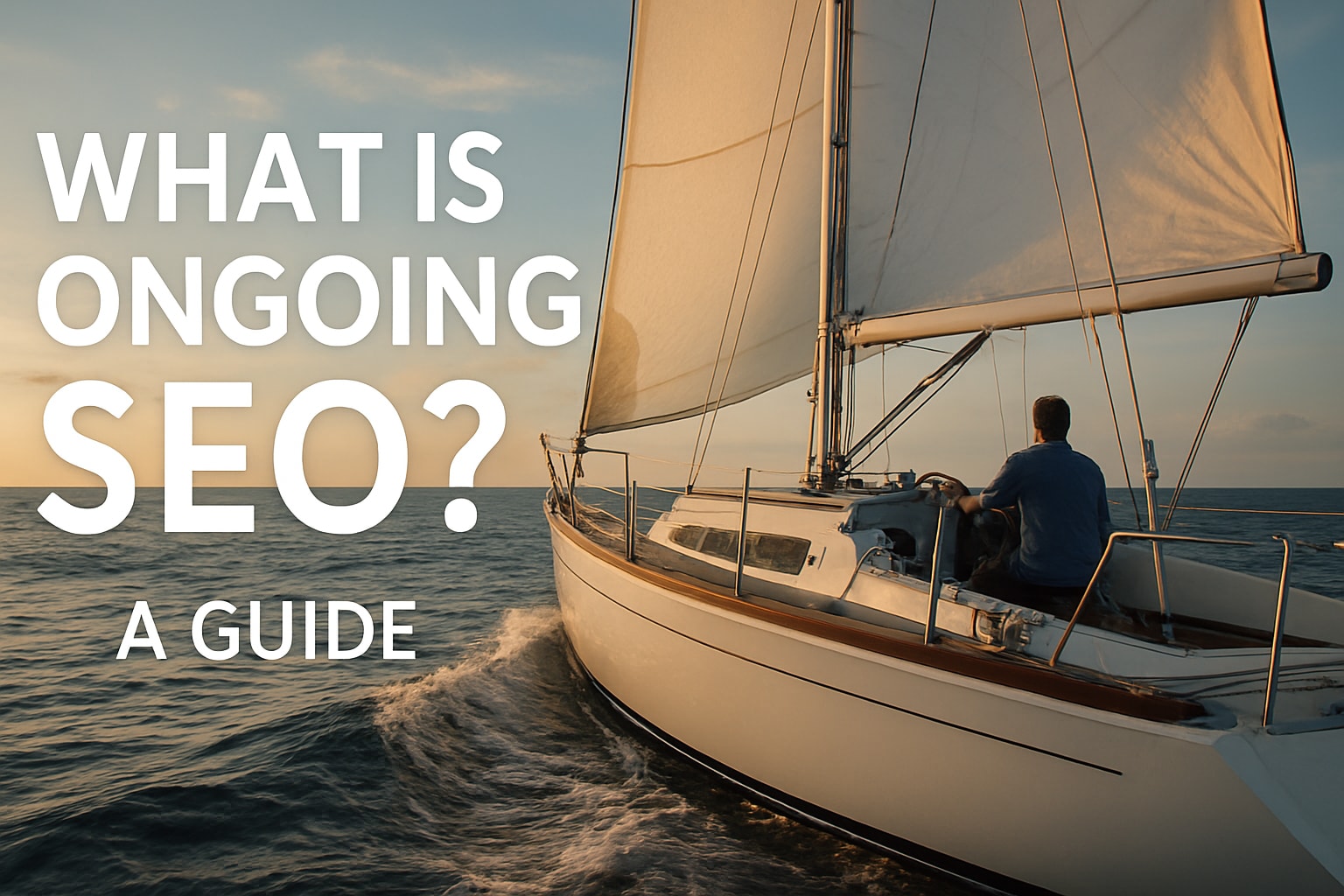The charter boat industry is entering a golden era. With global revenues expected to top $15 billion by 2027, there’s incredible momentum and room for new ventures in marine tourism right now.
Thinking about launching your own charter service? This 2025 guide breaks down every critical stage of the journey. You’ll find clear steps on choosing your niche, meeting legal and safety requirements, handling finances, picking the right vessel, crafting a marketing strategy, and setting up for long-term growth.
If you’ve ever wondered how to start a charter boat business, you’re in the right place. Whether you dream of luxury yacht tours, fishing expeditions, or eco-friendly cruises, you’ll get actionable advice, insider tips, and real-world examples. Use this guide as your blueprint to build a thriving charter boat business in 2025.
Step 1: Defining Your Charter Boat Business Model
Setting the foundation for how to start a charter boat business begins with a clear understanding of your market, niche, and service design. The right business model not only attracts your ideal clients but also helps your brand stand out in a competitive marine landscape.
Assessing Market Demand and Identifying Your Niche
Researching the local and global charter market is essential when mapping out how to start a charter boat business. Industry data forecasts significant growth, with the global yacht charter market expected to reach over $15 billion by 2027. Start by analyzing trends like luxury charters, fishing trips, and adventure-based tours. Look at your region’s seasonality and consider what draws visitors year-round.
Next, scope out your competition. Is your area saturated with sightseeing cruises but lacking high-end private charters? Or maybe there’s a gap in eco-friendly or family-focused tours. Target demographics matter. Are you catering to tourists, corporate groups, or locals celebrating special events? Each group brings unique needs and booking patterns.
For example, Blue Life Charters found success by focusing on luxury private sailboat tours in Charleston, targeting couples and small groups seeking exclusivity. Niche targeting like this often allows for premium pricing and strong customer loyalty. If you’re interested in a specific segment, such as fishing charters, this How to start a fishing charter business guide offers step-by-step insights tailored to that niche.
Choosing Your Services and Experiences
The next step in how to start a charter boat business is designing your service menu. Typical offerings include sightseeing cruises, fishing expeditions, sunset sails, and water sports adventures. Think about what sets your region apart. Can you add dolphin-watching, dinner cruises, or even overnight stays?
Adding value is key. Consider extras like onboard catering, live entertainment, or themed events for holidays and celebrations. Decide if you’ll offer private group bookings or open charters for individuals. Duration matters too. Half-day, full-day, or multi-day options each attract different customer types and impact pricing.
For instance, a bachelorette party cruise might be a three-hour event with snacks and music, while a fishing trip could last all day and include equipment rental. On average, private charters generate between $500 and $2,000 daily, depending on the experience. Carefully curating your services not only increases customer satisfaction but also helps optimize your revenue potential as you plan how to start a charter boat business.
Setting Your Unique Selling Proposition (USP)
To truly stand out as you determine how to start a charter boat business, define what makes your brand unique. Is it luxury amenities, eco-friendly operations, or an expert crew with local knowledge? Your USP should be woven into your website, marketing materials, and even your onboard experience.
Craft messaging that resonates with your target audience. For example, Blue Life Charters highlights its high-end sailboats and exceptional service in all communications. Use client testimonials and positive reviews as social proof. This builds trust and helps convert website visitors into loyal customers, reinforcing your reputation in the marine industry.
How Digital Marketing Fuels Charter Growth
In today’s crowded marine market, digital marketing is the engine behind a successful launch. When learning how to start a charter boat business, online visibility is crucial. Targeted SEO, pay-per-click advertising, and conversion optimization help your charter stand out on Google and drive direct bookings.

Industry-specific digital marketing solutions can deliver measurable results. For example, a Charleston-based charter company increased bookings by 63 percent after implementing a tailored digital strategy. Investing in professional online marketing not only fills your calendar but also positions your charter as a leader in your local market.
Step 2: Crafting a Solid Business Plan
Launching a charter operation starts with a bulletproof business plan. If you want to know how to start a charter boat business that stands the test of time, you need more than a great vessel—you need a strategy that covers every angle. Let’s break it down step by step so you can chart a course for real, measurable growth.

Market Research and Competitive Analysis
The groundwork of how to start a charter boat business is understanding your market. Begin by gathering data on local and regional demand—look at tourism trends, seasonal fluctuations, and the types of charters popular in your area.
Identify both direct competitors (other charter operators) and indirect ones (peer-to-peer platforms, rental apps). Study their pricing, service offerings, and customer reviews to spot gaps. For instance, is there a shortage of eco-tours or luxury experiences?
Forecast the opportunity with real numbers. The U.S. yacht charter market is expected to reach USD 2,068.6 million by 2030, showing strong growth potential. Use these stats to build a compelling case for your new venture.
Financial Planning and Cost Breakdown
A solid grasp of costs is non-negotiable if you want to master how to start a charter boat business. Begin by outlining your startup expenses:
| Cost Category | Estimated Range |
|---|---|
| Vessel purchase/lease | $100,000–$1,000,000 |
| Insurance | $5,000–$12,000/year |
| Dock fees | Varies by location |
| Equipment | $10,000–$50,000 |
| Marketing | $3,000–$15,000 |
Ongoing costs include fuel (typically 1–4 gallons per hour), annual maintenance (about 10 percent of vessel value), and crew salaries. Plan for seasonal dips—summer might be packed, but winter can be quiet. Aim for a break-even point within 12 to 18 months, and always keep a contingency fund for repairs or slow months.
Many successful owners start with pre-owned boats to reduce initial investment by up to 50 percent. Factor in all potential revenue streams, from private charters to special events, and be realistic with projections. This is where your financial discipline sets you apart.
Legal Structure and Business Registration
Choosing the right legal structure is a core step in how to start a charter boat business. Options include LLC, corporation, partnership, or sole proprietorship. Each has different implications for liability and taxes.
Register your business name and secure a matching domain for a professional online presence. Apply for a federal EIN and obtain any state or local licenses needed. Depending on your location, zoning approval or a seller’s permit might also be required. Get these steps right from the start to avoid costly headaches later.
Setting Goals and KPIs
Set clear, actionable goals for your business. What do you want to achieve in year one? Maybe it’s a 60 percent occupancy rate or a set number of five-star reviews. KPIs for how to start a charter boat business should include:
- Occupancy rate
- Average booking value
- Customer retention rate
Track these regularly to measure performance and guide your next move.
Step 3: Navigating Legal, Insurance, and Safety Requirements
Charting a course for how to start a charter boat business begins with a rock-solid foundation in legal, insurance, and safety requirements. This section covers the essentials every marine entrepreneur needs to know before launching. Careful attention to these areas not only protects your investment but also builds trust with customers and regulatory bodies alike.

Permits, Licenses, and Certifications
Securing the right permits and certifications is a crucial first step for anyone researching how to start a charter boat business. In the United States, the most fundamental requirement is the U.S. Coast Guard Captain’s License. There are different classes, like the OUPV (Operator of Uninspected Passenger Vessels) for up to six passengers and the Master license for larger groups. For European operations, the International Certificate of Competency (ICC) is often required.
You’ll also need to check for state and local licenses—think saltwater fishing permits, food service certifications if you offer catering, and signage approvals. Eco-tour ventures may require additional environmental permits, especially when operating in protected waters. For more details on federal licensing, review the USCG Captain’s License requirements to ensure compliance from day one.
Don’t forget: each region may have unique rules, so contact local authorities early in your planning. Companies like Blue Life Charters demonstrate the importance of staying compliant by holding all necessary USCG and state credentials. Tackling permits up front removes roadblocks and sets a professional tone for your charter.
Insurance Essentials
Insurance is non-negotiable when considering how to start a charter boat business. At minimum, you’ll need liability coverage—most operators carry at least $1 million, with annual costs ranging from $5,000 to $12,000 depending on vessel size and operations. Hull insurance protects the boat itself, covering damage to the structure, machinery, and onboard equipment.
Passenger and crew insurance is equally important, safeguarding everyone onboard in case of accidents. It’s smart to work with a marine-specific insurance broker who understands the unique risks and can tailor policies for your business model. This step isn’t just about legal compliance—it’s a vital part of your risk management strategy.
Safety Protocols and Equipment
Safety is at the core of how to start a charter boat business that earns five-star reviews and repeat bookings. Every vessel must be equipped with Coast Guard-approved life jackets for each passenger, fire extinguishers, and well-stocked first-aid kits. Routine safety drills for crew ensure everyone knows what to do in an emergency.
Clear emergency response plans and thorough passenger briefings should be standard practice before every trip. Regular monthly safety checks, like those performed by Blue Life Charters, reinforce your commitment to guest well-being. Up-to-date equipment and rigorous training are non-negotiable if you want to build a trustworthy brand.
Compliance and Ongoing Inspections
Staying compliant is a continuous process for anyone focused on how to start a charter boat business. Schedule regular vessel inspections and keep detailed logs—these are often required by authorities and can be requested at any time. Maintain records of all repairs, upgrades, and safety drills.
It’s essential to stay updated on changes to regulations for 2025 and beyond. Zoning approvals may also be needed for your office or dock facilities. For instance, some regions require fire department inspections before you can operate. Proactive compliance avoids costly disruptions and demonstrates professionalism to both clients and regulators.
Risk Management and Liability Reduction
Every business owner thinking about how to start a charter boat business should implement strong risk management practices. Use clear waivers and contracts for passengers, outlining the risks and responsibilities. Invest in basic security measures to protect against theft or vandalism.
A proactive approach—regular reviews of safety protocols, insurance policies, and legal documents—minimizes exposure to legal or financial setbacks. Ultimately, managing risk is about protecting your reputation, your customers, and the future of your charter operation.
Step 4: Acquiring and Outfitting Your Charter Vessel
Choosing the right vessel is a cornerstone of how to start a charter boat business. Your boat is more than transportation—it's the heart of your guest experience, your brand's first impression, and a major investment. Let's break down how to select, equip, and manage your vessel for long-term success.

Selecting the Right Boat for Your Business Model
The foundation of how to start a charter boat business lies in matching your vessel to your chosen market and service model. Are you aiming for luxury sunset cruises, deep-sea fishing, or family-friendly eco-tours? Each niche demands specific vessel features.
Here's a quick comparison of popular charter boat types:
| Vessel Type | Capacity Range | Best For | Typical Investment |
|---|---|---|---|
| Sailboat | 2–12 | Luxury, private tours | $100K–$800K |
| Catamaran | 6–20 | Groups, stability | $300K–$1.2M |
| Motor Yacht | 8–50+ | Events, parties | $500K–$2M+ |
| Fishing Boat | 4–10 | Sport, adventure | $80K–$500K |
Passenger comfort, amenities, and safety standards should drive your decision. For instance, Blue Life Charters invested in high-end sailboats with plush interiors, attracting premium clients in Charleston.
New boats offer reliability and warranties but cost more upfront. Pre-owned vessels can cut your initial investment by 30–50 percent, making them a smart choice for many just learning how to start a charter boat business.
Plus, with the global yacht charter market projected to reach USD 15.53 billion by 2032, there's room to grow and diversify as you scale.
Outfitting for Safety, Comfort, and Experience
Once you've secured the right vessel, focus on outfitting it to deliver the best possible experience. This is where how to start a charter boat business becomes truly hands-on.
Start with safety: Coast Guard-approved life jackets, modern navigation systems, and fire extinguishers are non-negotiable. Next, tailor your onboard amenities to your target market. Fishing charters need top-tier rods and bait stations. Dinner or sunset cruises benefit from upgraded seating, shade canopies, and catering facilities.
Consider these key upgrades:
- Entertainment: Bluetooth speakers, lighting, Wi-Fi
- Comfort: Cushioned seating, restrooms, climate control
- Activities: Snorkel gear, paddleboards, wildlife viewing binoculars
A well-outfitted vessel sets you apart and justifies premium pricing in how to start a charter boat business.
Maintenance and Operational Considerations
Keeping your vessel in top shape is essential for reliability, customer satisfaction, and profitability. In the context of how to start a charter boat business, maintenance can't be an afterthought.
Plan to allocate at least 10 percent of your vessel's value annually for maintenance. Schedule routine checks for engines, hull integrity, electrical systems, and safety gear. Document every inspection and service for compliance and insurance.
Unexpected repairs happen, so maintain a contingency fund. Investing in fuel-efficient or hybrid models can also save tens of thousands per year. This operational diligence keeps your charter running smoothly and avoids costly downtime.
Docking, Storage, and Logistics
Location is everything in how to start a charter boat business. Securing a marina slip in a high-traffic area boosts visibility and walk-up bookings. Negotiate terms for dock rental, and factor in access for customers, parking, and proximity to amenities.
For off-season or storm-prone regions, plan for secure storage and a hurricane response protocol. Some operators even choose marinas with on-site repair facilities for added convenience.
Logistics also include provisioning, waste disposal, and daily cleaning routines. Detailed planning here streamlines operations and leaves a strong impression on guests.
Staffing and Crew Requirements
Your crew is the face of your charter operation. Hiring licensed captains and experienced crew is a must for how to start a charter boat business that earns five-star reviews.
Train every team member in hospitality, local knowledge, and emergency procedures. Top crews go beyond safety—they create memorable, personalized experiences for every guest.
A well-chosen, well-trained crew is your secret weapon for customer loyalty and word-of-mouth growth.
Step 5: Building a Winning Marketing and Booking Strategy
Establishing a standout presence in the marine industry is the backbone of how to start a charter boat business successfully. In a digital-first world, your marketing and booking systems are what set you apart from the competition. This step breaks down each tactic, ensuring your charter business not only attracts attention but converts interest into loyal customers.
Developing a Professional Website and Online Presence
A polished website is your digital storefront, and it is absolutely essential if you want to master how to start a charter boat business. Your site should be mobile-friendly, visually stunning, and effortless to navigate. High-resolution photos of your vessels and experiences help build trust and excitement. Include detailed service descriptions, transparent pricing, and clear calls to action.
Showcase genuine customer testimonials and a robust FAQ section. These elements boost credibility and answer common questions before potential guests even reach out. A streamlined booking form, integrated with secure payment options, makes the user journey seamless.
On top of that, use your website as the hub for all other marketing efforts. Link your social profiles, blog about local marine events, and offer downloadable brochures. Remember, most guests will judge your charter’s professionalism based on your online presence. Make every click count as you figure out how to start a charter boat business that stands out.
SEO and Local Search Optimization
Ranking high on Google is a game-changer for anyone researching how to start a charter boat business. Start by targeting location-specific keywords, like “boat charters [your city].” Optimize every page title, meta description, and image alt tag. Claim and enhance your Google Business Profile, ensuring your hours, services, and contact info are current.
Citations in reputable marine directories and consistent NAP (Name, Address, Phone) details across the web are critical. Encourage happy guests to leave reviews, since these boost your local rankings. For a detailed walkthrough, check out this Local SEO for marine businesses guide to ensure your charter stands out when travelers are searching.
Guest blogging on tourism sites, collaborating with local influencers, and earning backlinks from partners all help lift your visibility. Remember, visibility in local search is often the tipping point for booking decisions.
Social Media and Reputation Management
Social media is where your charter’s personality shines. Platforms like Instagram and Facebook are ideal for sharing vibrant photos, behind-the-scenes videos, and guest stories. Respond quickly to comments and messages—prompt engagement builds trust and loyalty.
Encourage guests to tag your business and use branded hashtags. This user-generated content acts as authentic marketing, reaching friends and family of your customers. Collect reviews on Google, TripAdvisor, and Yelp, and always thank guests who leave feedback.
A consistent, active presence signals reliability. Plus, it’s a direct channel for updates, promotions, and last-minute availability—key for anyone learning how to start a charter boat business that keeps calendars full.
Paid Advertising and Promotions
Smart advertising accelerates growth for those exploring how to start a charter boat business. Google Ads and targeted social media campaigns put your offerings in front of travelers actively planning trips. Focus on high-converting keywords and tailor ads by season or audience.
Retarget website visitors with reminder ads, nudging them to complete their booking. Limited-time discounts, referral bonuses, or bundled packages create urgency and boost conversions. Track your campaigns closely, adjusting creative and budget for the best return.
Promote special experiences like sunset cruises during peak times, or offer group rates for events. Measurable promotions help you understand what resonates and where to invest.
Partnerships and Local Networking
Building strong local partnerships is a powerful move in how to start a charter boat business. Collaborate with hotels, resorts, and travel agencies to reach new guests. Cross-promote with popular restaurants and tourist attractions—offer package deals or referral incentives.
Attend local tourism events, network at marine expos, and join regional business associations. These connections not only fill your calendar but also boost your reputation among trusted local brands.
Well-placed partnerships can lead to exclusive contracts for corporate outings or events. Plus, community involvement shows guests you are a valued part of the local scene.
Booking Systems and Customer Experience
A frictionless booking process can make or break your guest’s first impression. Invest in online booking software that displays real-time availability, processes secure payments, and sends instant confirmations. Automated reminders and follow-ups reduce no-shows.
Choose systems that integrate with your website and allow for easy management of schedules, payments, and guest data. Streamlining these processes lets you focus on delivering an exceptional charter experience—vital for anyone serious about how to start a charter boat business that earns rave reviews.
Step 6: Delivering Exceptional Safety and Customer Experience
Delivering an outstanding customer experience and maintaining the highest safety standards are the backbone of any successful charter operation. In fact, mastering these two areas is essential for anyone researching how to start a charter boat business and build a reputation that keeps guests coming back.
Setting and Exceeding Service Standards
In the marine industry, service is your signature. Defining clear standards for hospitality sets you apart from the competition. Every guest should feel welcomed from the moment they step aboard. Personalized greetings, clean and comfortable amenities, and thoughtful touches like complimentary snacks or photo packages elevate the experience.
Train your crew not only in navigation and safety, but also in customer service and conflict resolution. When customers feel valued, they are more likely to recommend your services to others. This attention to detail is a must for anyone looking into how to start a charter boat business and succeed long term.
Offering extras, such as drink services or onboard entertainment, can make your charters memorable. These little things add up, turning a simple outing into an unforgettable adventure.
Safety as a Selling Point
Safety is not just a requirement, it is a marketing asset. Promoting your safety protocols in all communications builds trust with potential guests. Pre-departure briefings, visible safety equipment, and regular drills show that you put guests’ wellbeing first.
Keep safety gear up to date and ensure your crew is trained for emergencies. Monthly safety checks, like those performed by top operators, demonstrate ongoing commitment. If you are figuring out how to start a charter boat business, remember that a spotless safety record can become a powerful differentiator in a crowded market.
Highlighting your focus on safety in your brochures and on your website reassures clients and can tip the scales in your favor when they are booking.
Handling Customer Feedback and Building Loyalty
Feedback is gold for continuous improvement. After each trip, collect guest impressions through surveys or quick online reviews. Address any negative comments promptly and with professionalism. Satisfied guests are your best marketing tool, so encourage them to share their stories online.
Implementing a loyalty or referral program can turn one-time clients into repeat customers. This is a proven strategy for those exploring how to start a charter boat business and achieve sustainable growth.
Responding to reviews, both good and bad, shows prospective guests that you care. Word-of-mouth and positive online feedback drive bookings and boost your reputation.
Adapting to Customer Preferences and Trends
The charter industry evolves quickly. Stay ahead by monitoring guest preferences and industry trends. Eco-friendly tours, themed excursions, or integrating new technologies like hybrid-electric vessels can attract new markets.
Update your offerings regularly based on guest feedback. If you are serious about how to start a charter boat business that thrives, flexibility is vital. Being responsive to trends and customer desires will keep your business relevant and appealing.
Evaluate new ideas thoughtfully, but do not be afraid to innovate. Adaptation is key to long-term success and ongoing customer satisfaction.
Step 7: Scaling and Future-Proofing Your Charter Boat Business
Scaling is where vision meets momentum. Once you’ve mastered how to start a charter boat business, it’s time to think bigger. Growth isn’t just about adding boats, it’s about future-proofing every part of your operation for lasting success.
Expanding Your Fleet and Services
Growth starts with knowing when and how to scale. Once you understand how to start a charter boat business and achieve consistent bookings, analyze your demand data. Are you turning away groups due to limited space? Is there untapped interest in specialty trips like corporate events or overnight excursions?
Consider these steps:
- Assess booking trends for seasonality and service gaps
- Explore new routes or themed experiences
- Evaluate financing options for fleet expansion
A table can help clarify decisions:
| Growth Option | Pros | Cons |
|---|---|---|
| Add new vessel | Increases capacity | Higher upfront cost |
| Launch new experiences | Attracts new markets | Requires staff training |
| Expand routes | Diversifies risk | Logistics complexity |
Scaling isn’t just about more boats, it’s about smarter offerings. Stay agile and keep your customer needs at the center.
Streamlining Operations and Automation
Efficiency is the backbone of a scalable charter business. If you’re still relying on manual bookings or paper logs, you’re limiting your growth. Invest in digital management tools for scheduling, maintenance, and crew assignments. Automate routine communications to free up your team’s time for what matters most.
Consider:
- Online booking systems with real-time availability
- Automated marketing and customer follow-ups
- Maintenance tracking software
For digital optimization, follow an SEO checklist for marine industry to ensure your online presence scales with your business. Streamlining these processes is vital for anyone learning how to start a charter boat business and planning for long-term success.
Monitoring Financial Performance and KPIs
You can’t scale what you don’t measure. Regularly track your financials and operational metrics to spot trends early. Key performance indicators (KPIs) to watch include occupancy rates, average revenue per trip, and customer retention.
A quick list of important KPIs:
- Occupancy percentage
- Booking source breakdown
- Revenue by service type
- Cost per acquisition
If you want to boost your results further, learning how to rank your marine business website can drive more direct bookings and improve your bottom line. Keeping a close eye on these numbers is a must for anyone serious about how to start a charter boat business and scale it sustainably.
Staying Compliant and Adapting to Regulations
Regulations change, and so should your business practices. Stay updated on local, state, and federal requirements for licensing, insurance, and environmental standards. Renew all critical documents before expiration, and review your compliance checklist annually.
Join marine industry associations to receive timely updates and best practices. Document all inspections and keep digital records for easy access. The most successful operators view compliance as a trust builder, not just a box to tick.
Future-proofing is an ongoing process. If you want to master how to start a charter boat business and keep it thriving, make adaptability and compliance a core part of your growth strategy.
You’ve just explored the essential steps to launching a successful charter boat business in 2025—from choosing your niche and outfitting your vessel, to building a standout online presence and delivering memorable guest experiences. If you’re serious about turning your charter dreams into a sustainable, fully booked business, let’s make sure your marketing strategy is as strong as your business plan. At Aquatic SEO, we help marine professionals like you attract more customers and maintain consistent bookings, no matter the season. Ready to see how our industry expertise can drive your growth? Schedule a Free Strategy Call and let’s chart your course to success together.





